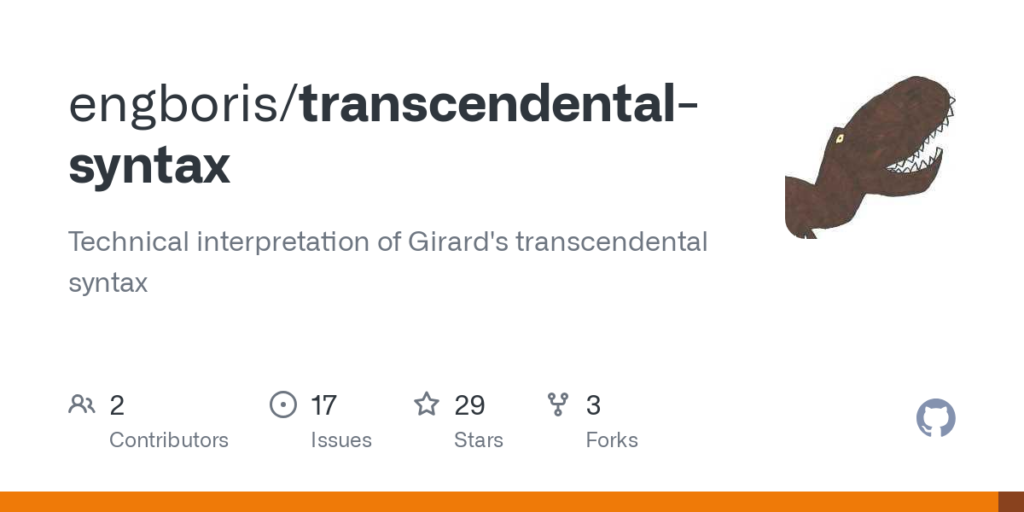The transcendental syntax is a method of constructing logical abstractions from
a low-level elementary and “logic-agnostic” language.
This elementary language we use to build abstractions is called
“stellar resolution” and its elementary objects corresponding to programs are
called “constellations”.
Those constellations are used in a higher-level language called “Stellogen” in
which notions such as proofs and formulas are defined (this is basically a
metaprogramming language for constellations). By the proof-as-program
correspondence, this can be extended to programs and types.
The stellar resolution (RS) is a model of computation introduced by Jean-Yves
Girard [1] in his transcendental syntax project as a basis for the study of the
computational foundations of logic. It has been mainly developed by Eng later
in his PhD thesis [2].
It can be understood from several points of view:
- it is a logic-agnostic, asynchronous and very general version of Robinson’s
first-order resolution with disjunctive clauses, which is used in logic
programming; - it is a very elementary logic-agnostic constraint programming language;
- it is a non-planar generalization of Wang tiles (or LEGO bricks) using terms
instead of colours and term unification instead of colour matching; - it is a model of interactive agents behaving like molecules which interact
with each other. It can be seen as a generalization of Jonoska’s flexible
tiles used in DNA computing; - it is an assembly language for meaning.
Stellar resolution is very elementary and an interpreter for it can be written
in a very concise way since it mostly relies on a unification algorithm.
This project is still in development, hence the syntax and features are still
changing.
Go to https://tsguide.refl.fr/ (guide currently in French only) to learn more
about how to play with the current implementation of transcendental syntax.
You can either download a released binary
(or ask for a binary) or build the program from sources.
Install opam and OCaml from opam : https://ocaml.org/docs/installing-ocaml
Install dune:
Install dependencies
opam install . --deps-only
Build the project
Executables are in _build/default/bin/.
Assume the executable is named sgen.exe. Interpreter Stellogen programs with:
or if you use Dune:
Some example files with the .sg extension in /examples are ready to be
executed. In Eng’s thesis, ways to work with other models of computation are
described (Turing machines, pushdown automata, transducers, alternating
automata etc).
Premium IPTV Experience with line4k
Experience the ultimate entertainment with our premium IPTV service. Watch your favorite channels, movies, and sports events in stunning 4K quality. Enjoy seamless streaming with zero buffering and access to over 10,000+ channels worldwide.

















